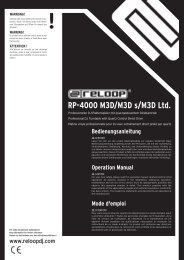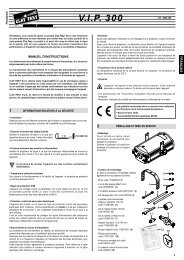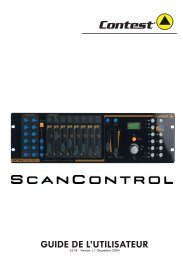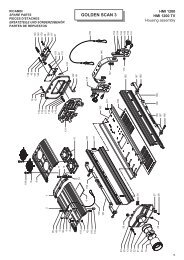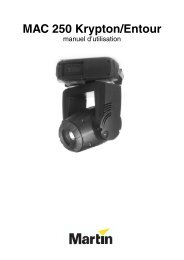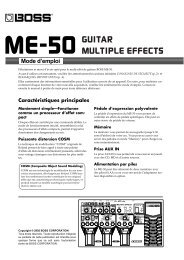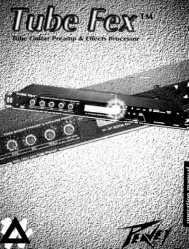Sequential Circuits Prophet-5 Service Manual - Audiofanzine
Sequential Circuits Prophet-5 Service Manual - Audiofanzine
Sequential Circuits Prophet-5 Service Manual - Audiofanzine
You also want an ePaper? Increase the reach of your titles
YUMPU automatically turns print PDFs into web optimized ePapers that Google loves.
tIAt the speed this system normally operates, completely asynchronous operation was notpossible. Therefore the external circuitry provides its own normally-high clock. Clockdivision is not used, so during data transmission a clock pulse must accompany eachdata bit. As shown, the <strong>Prophet</strong> receiver samples DATA TO on the rising edge of theclock. The clock should be free running, but the system will work if the clock togglesonly during data transmission.9-2 Error CheckingWhen itreceives data, the <strong>Prophet</strong> receiver interrupts its CPU which examines a statusregister in the receiver. The status register indicates if there are any errors. If there isan error, the <strong>Prophet</strong> transmits code 3F on DATA FROM SYNTH.There are three possible types of errors: parity, framing, and overrun.Odd parity works by counting the total number of the data bits and the parity bit (9total) which are set. If one, three, five, or seven data bits are set (1), parity is alreadyodd, therefore the parity bit is left reset (0). If zero, two, four, six, or eight data bitsare set, the parity bit is set to make the total set bit count odd. The <strong>Prophet</strong> checksDATA TO for parity. The <strong>Prophet</strong> sends the parity bit with DATA FROM. However, youmay choose to ignore parity at your sequencer receiver.A framing error results when the receiver doesn't find a stop bit at the end of the byte.In a standard asynchronous system this could be caused by a gross difference in transmitand receive clock frequencies. On this system there is a single clock, so a framing errormay only result from actual data loss or noise.An overrun error results when data is being sent too fast for the <strong>Prophet</strong> receiver toprocess it (or, by not allowing enough time between bytes). So, this error results fromtransmit timing problems with your interface.9-3 Status BytesThe <strong>Prophet</strong>-5 never volunteers DATA FROM, itonly transmits when prompted by thesequencer. Communication is initiated by the sequencer transmitting "status" byteswhich may or may not signify that data follows. For example, to change programs thesequencer first sends a byte to the <strong>Prophet</strong> saying that the next byte is the newprogram number. The <strong>Prophet</strong> will then wait for this second"Byte, and change itsprogram accordingly when itis received.There are 12 unique status bytes. A status byte Is simply a unique hexadecimal (H)number. It is distinguished from other bytes merely by being the first which thesequencer transmits to the <strong>Prophet</strong> as part of any data transfer. The <strong>Prophet</strong> requires- 1-1/2 milliseconds (worst case) to respond to the status byte interrupt. It will then beready to receive or transmit data which is formatted and timed as specified below.Generally, while data can be transmitted with spaces of between 1 to ^ ms betweenbytes without causing errors, you will probably want to operate faster for the mosttransparent operation. Most of the <strong>Prophet</strong>'s receiving operations are accompanied by a"time-out" which declares an error if data is not received within ^ ms. When such anerror is detected, the <strong>Prophet</strong> simply ignores the received data and resets to wait foranother status byte. So if your data arrives too late, or you accidentally send more datathan needed, the <strong>Prophet</strong> may interpret the data as a status byte.9-2TM1000D.2 10/81






